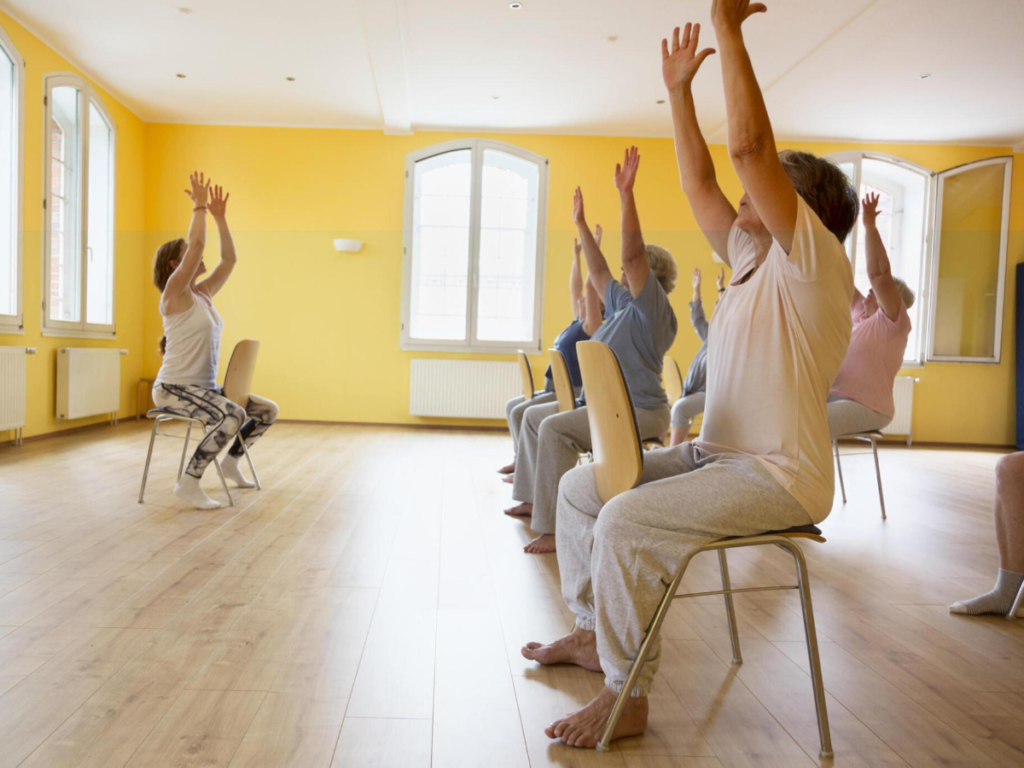For the countless individuals grappling with chronic pain, back issues, or arthritis, everyday tasks can seem like an endless struggle. Yet, imagine if there existed a gentle, accessible routine capable of providing relief and instilling a sense of empowerment. Welcome to yoga, an age-old discipline demonstrating remarkable efficacy in pain management.

More Than Just Stretching:
Yoga goes beyond simple stretching. It combines physical postures (asanas), breathing exercises (pranayama), and mindfulness meditation to address pain on multiple levels. Asanas gently improve flexibility and mobility, strengthening muscles that support joints. Pranayama helps manage stress, a significant contributor to pain perception. Meditation cultivates mindfulness, allowing individuals to observe pain without emotional reactivity, reducing its emotional burden.
Scientific Evidence:
Numerous studies support yoga’s potential for pain management. A 2020 review of 25 randomized controlled trials concluded that yoga effectively reduces pain and improves function in chronic low back pain. Other studies show promising results in managing arthritis, neck pain, and headaches.
Specific Benefits:
- Reduced Pain: Asanas gently mobilize stiff joints, improving circulation and reducing inflammation. Studies suggest the practice can decrease pain perception by up to 50%.
- Improved Flexibility and Mobility: Tight muscles contribute to pain. Yoga stretches lengthen and strengthen muscles, improving flexibility and range of motion, reducing strain on joints.
- Enhanced Strength and Stability: Strong core muscles support the spine and reduce back pain. Yoga poses target core muscles, improving overall stability and reducing pain risk.
- Stress Management: Chronic stress exacerbates pain. Pranayama and meditation techniques in yoga help manage stress, leading to reduced pain perception and improved well-being.

- Improved Sleep: Many chronic pain conditions are linked to sleep problems. Yoga practices promote relaxation and better sleep, contributing to pain management.
- Empowerment and Self-Management: Yoga teaches individuals to actively participate in their pain management, fostering a sense of control and reducing feelings of helplessness.
Finding the Right Yoga for You:
Not all yoga is created equal. While restorative yoga offers gentle poses and meditation, vinyasa styles might be too intense for initial pain management. Consider these options:
- Hatha Yoga: This foundational style offers gentle postures suitable for beginners.

- Yin Yoga: Held poses target connective tissues, improving flexibility and promoting relaxation.

- Restorative Yoga: Supported poses allow deep relaxation, relieving stress and pain.

- Chair Yoga: Ideal for individuals with limited mobility, utilizing chairs for support.

- Yoga Therapy: Personalized sessions tailored to specific needs and pain conditions.

Starting Your Yoga Journey:
- Consult your doctor: Discuss your intention to practice yoga and any limitations you might have.
- Find a qualified instructor: Choose an instructor experienced in working with individuals with pain.
- Start slowly: Begin with beginner classes and gradually progress as your body adapts.
- Listen to your body: Don’t push through pain. Stop if you experience discomfort and modify poses as needed.
- Focus on breath: Pranayama helps manage pain and anxiety during practice.
- Be patient: Consistent practice is key. Don’t expect immediate results; enjoy the journey.
Beyond the Mat:

Yoga’s benefits extend beyond the physical practice. Cultivating mindful awareness through yoga can help manage stress, improve sleep, and foster an optimistic outlook, all contributing to pain management. Remember, yoga is a journey, not a destination. Embrace the practice, listen to your body, and celebrate your progress, one peaceful breath and gentle pose at a time.











